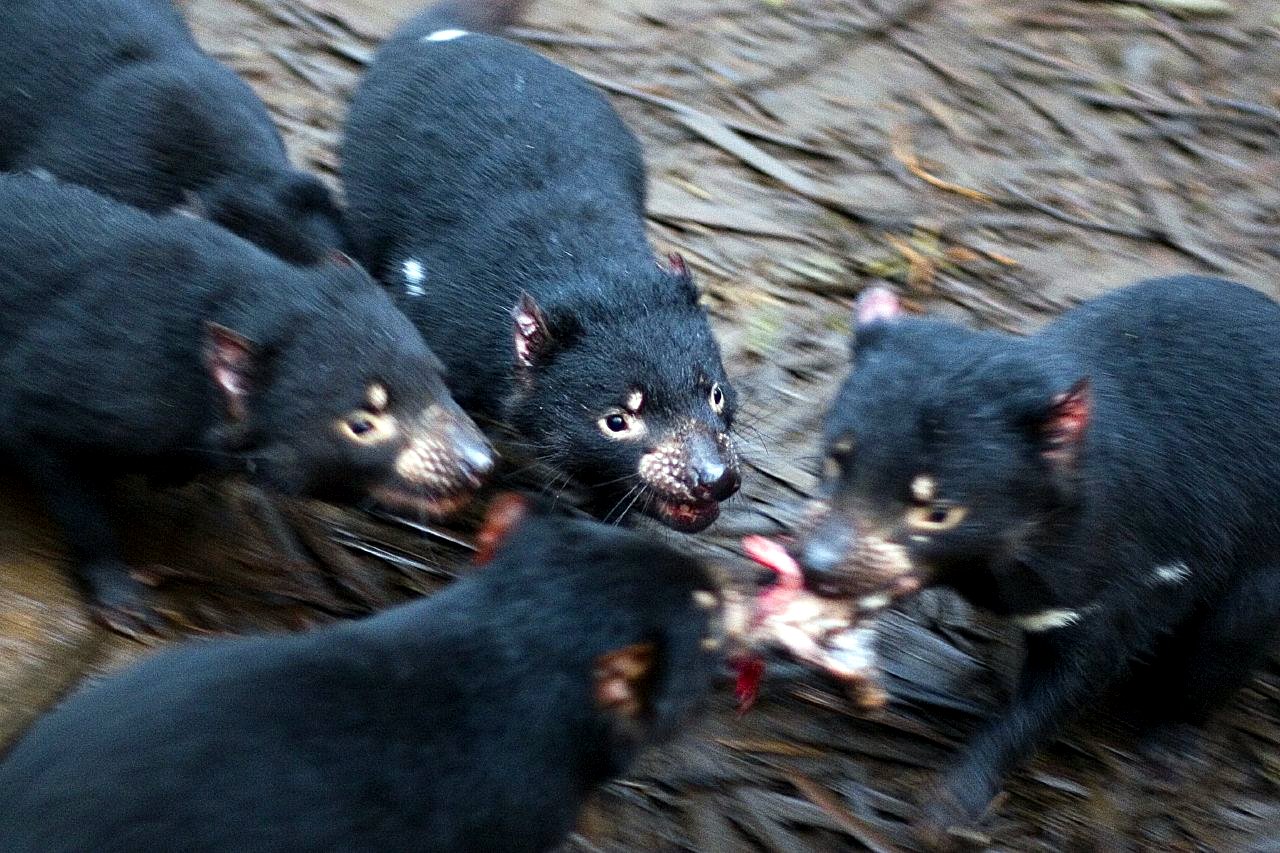Infectious cancer in Tasmanian Devils
Around 15 years ago, Tasmanian Devils, those cute little bad-tempered creatures from Down Under, began vanishing as a consequence of a new disease spreading rapidly among the population. Around 1996, a photographer documented severe facial tumors in the Devils in the northeast of Tasmania. By 1999, similar tumors appeared in Devils on the east coast. By 2003 it was clear that the entire population was in decline because of the disease. At first, it was assumed a virus or retrovirus was the cause.
But by 2006, scientists knew they were dealing with something new: a cancer that could spread among individuals by biting each other on the face. Tasmanian devils are not known for their polite behavior: they fight over everything, scratching, biting each other’s faces and jaw wrestling. As they did so, they were also infecting each other with the cancer in the process. When researchers examined the genetics of the cancer cells, they found that their chromosomes are unusually chaotically rearranged – with no sex chromosomes. They found the same genetic features across all the Devils’ cancers that they tested. They were so similar that it gave researchers the idea that this might be an infectious cell line.
Infectious cell lines aren’t too common. Ordinarily foreign cells are rejected, so this was very unusual, but Tasmanian Devils are a small, inbred population, which may explain the ability of the cancer to get through their immune defenses. It’s as if a transplant patient got an organ from a person who is a close genetic match: it is much less likely to be rejected.
This type of tumor could be considered a parasite: it is distinct, genetically, from the host Devil, and similar to the facial tumors in all the other Devils. It has recently been found to have most likely originated from a type of nerve cell known as Schwann cells. The existence of this type of parasitic cell has raised questions of the role carcinogenesis has played in the evolution of development, and whether other infectious cancers prompted us to evolve a strong rejection of transplanted tissue.
- 2003: Reference to a retrovirus in an official Tasmanian government report: A retrovirus is attacking the Tasmanian Devil causing cancerous lesions on the face, softening of the skull and eventual death. In high-density populations, over 90% of adults succumb to the virus (DPIWE 2003). The decline in devil populations has the potential to provide a window of opportunity for the establishment of foxes in the State. “
- Infectious cancer in Tasmanian devils
- Saving Tasmanian Devils From A New Form of Life-Themselves
- Clonal Origin and Evolution of a Transmissible Cancer. Cell. 2006 August 11; 126(3): 477-487. doi: 10.1016/j.cell.2006.05.051.
- Evolved for Cancer? by Carl Zimmer, Scientific American, January 2007
